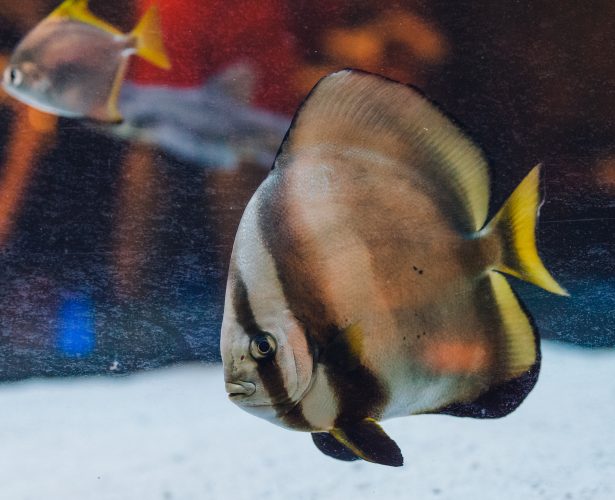Order: Perciformes
Family: Ephippidae (spadefishes)
Platax orbicularis

The Orbicular batfish inhabits the brackish and marine waters of the Indo-Pacific coral reefs. It is a species with a wide range of occurrence, but may be rare locally. The batfish is characterized by strong lateral compression of the body, a small head and a fine mouth. Its eggs are pelagic, meaning they float in the water, thanks to a drop of fat making them lighter than water. Juveniles occur singly or in small groups in mangrove habitats or sheltered lagoons. During the day, they pretend to be floating leaves that both serve as a source of food and a hiding place. The ventral, dorsal and anal fins are triangular, while the caudal fin is rounded. The body of adult specimens is yellow-silvery with two dark stripes visible, while the body of juveniles is dull orange with fine light dots. Adult specimens appear more frequently in mangrove environments. The maximum body length of the batfish is about 50 cm. This species is characterized by allometric growth, which means an uneven rate of development of body parts. This development is important for the camouflage of individuals at different stages of life. It is valued in China and Polynesia for its delicate meat with an interesting taste. As this species is prone to overfishing, attempts are made to breed it in aquaculture, among others, in French Polynesia and Tahiti, however, these aquaculture suffer from significant mortality due to bacterial contamination.


